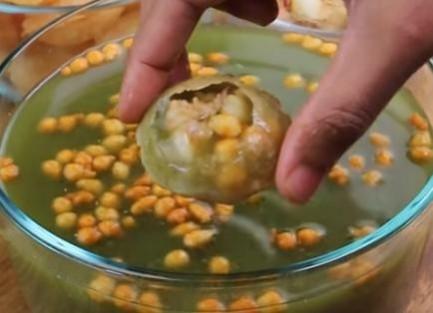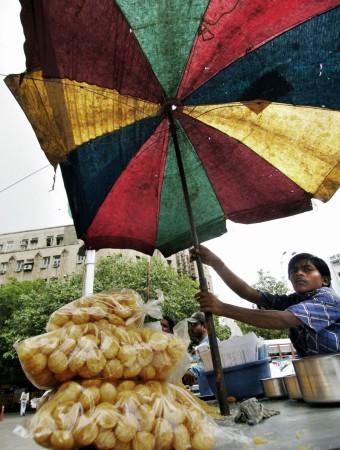
Love to binge on pani puri? Beware; eating pani puri laden with artificial colours may increase your risk of various cancers and asthma, amongst a host of other health issues, according to an expert on Tuesday.
Based on several complaints, Food Safety officials in Karnataka collected about 260 samples from roadside stalls. Of these, 22 percent pani puris failed miserably at quality tests. About 41 samples contained artificial colours and cancer-causing agents, while 18 were found stale and unfit for human consumption.
This comes after Karnataka's Food Safety and Standards Department in late June passed an order imposing a fine of up to Rs 10 lakh and punishment from seven years up to life imprisonment for using artificial colours in chicken kebabs, fish, and vegetable dishes across the state.

In March, Karnataka also banned the use of Rhodamine-B, an artificial colouring agent used in gobi manchurian and cotton candy.
"Use of an excess amount of artificial food colours and flavouring agents to make the dish look more appealing and increase palatability carries various health risks, especially in those who frequently indulge in outside food," Edwina Raj, Head of Services - Clinical Nutrition & Dietetics, Aster CMI Hospital, Bengaluru, said.
"Excessive exposure to such synthetic elements in food increases the risk of cancer, and disturbs gut health by increasing inflammation," she added.
The expert noted that it can also result in hyperactivity in children, allergic symptoms, and asthmatic attacks. Further, it can also lead to foodborne illnesses like typhoid if the water used in pani puri is contaminated.
Artificial food colorings are added to food products to enhance their visual appeal and stability, which in turn boosts taste and ensures consumer satisfaction. However, the use of dyes like Sunset Yellow, Carmoisine, and Rhodamine-B in food items raises several health risks.
Edwina noted that instead of artificial agents, one can consume foods that are made with "natural colour and flavour using beetroot, turmeric, saffron strands, etc".
(With inputs from IANS)

















